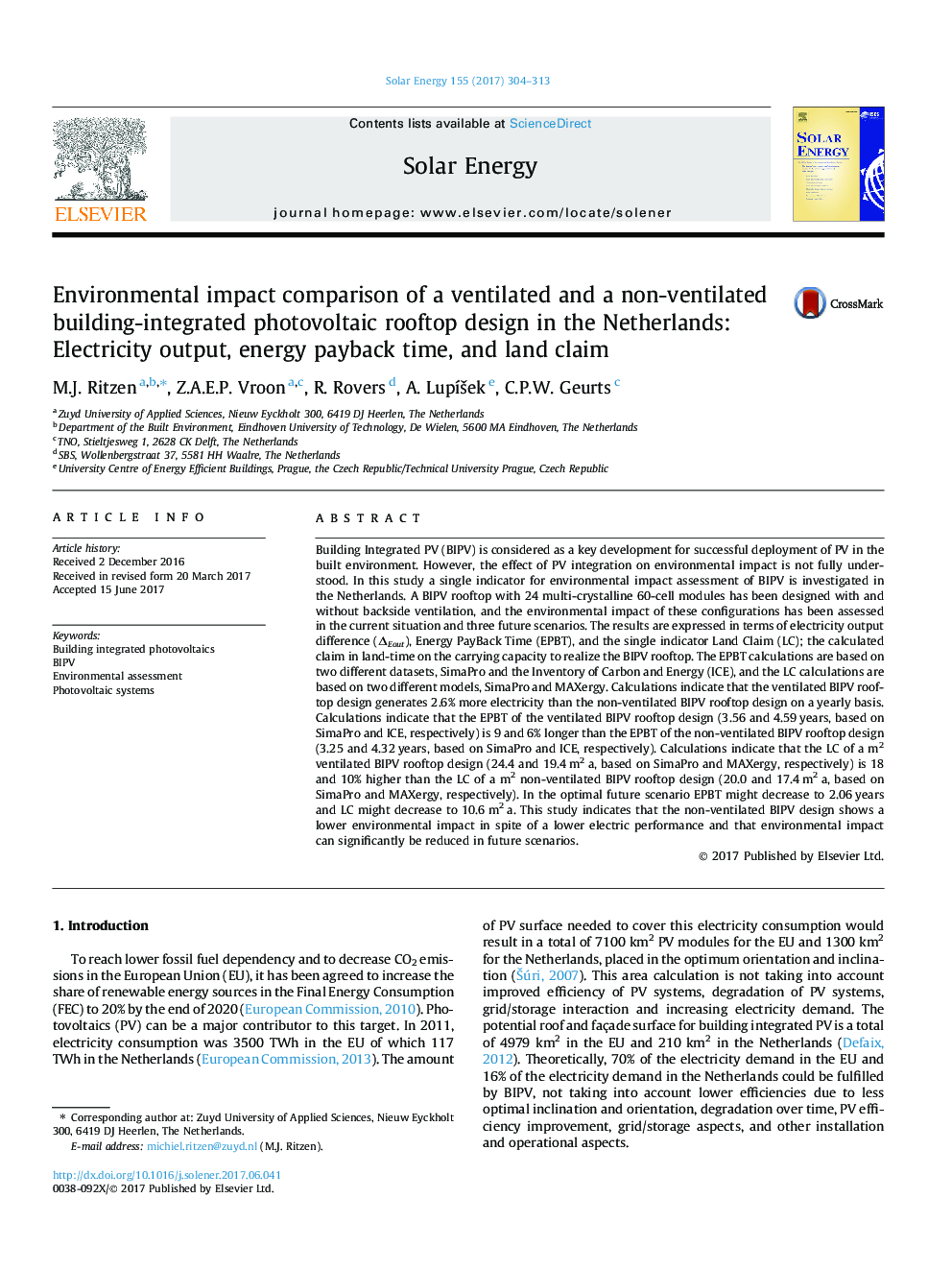| کد مقاله | کد نشریه | سال انتشار | مقاله انگلیسی | نسخه تمام متن |
|---|---|---|---|---|
| 5450624 | 1513063 | 2017 | 10 صفحه PDF | دانلود رایگان |
عنوان انگلیسی مقاله ISI
Environmental impact comparison of a ventilated and a non-ventilated building-integrated photovoltaic rooftop design in the Netherlands: Electricity output, energy payback time, and land claim
ترجمه فارسی عنوان
مقایسه تاثیر محیط زیست یک طراحی پشت بام های فتوولتائیک ساختمان تهویه شده و غیر هوادهی در هلند: خروجی برق، زمان بازپرداخت انرژی و ادعای زمین
دانلود مقاله + سفارش ترجمه
دانلود مقاله ISI انگلیسی
رایگان برای ایرانیان
کلمات کلیدی
موضوعات مرتبط
مهندسی و علوم پایه
مهندسی انرژی
انرژی های تجدید پذیر، توسعه پایدار و محیط زیست
چکیده انگلیسی
Building Integrated PV (BIPV) is considered as a key development for successful deployment of PV in the built environment. However, the effect of PV integration on environmental impact is not fully understood. In this study a single indicator for environmental impact assessment of BIPV is investigated in the Netherlands. A BIPV rooftop with 24 multi-crystalline 60-cell modules has been designed with and without backside ventilation, and the environmental impact of these configurations has been assessed in the current situation and three future scenarios. The results are expressed in terms of electricity output difference (ÎEout), Energy PayBack Time (EPBT), and the single indicator Land Claim (LC); the calculated claim in land-time on the carrying capacity to realize the BIPV rooftop. The EPBT calculations are based on two different datasets, SimaPro and the Inventory of Carbon and Energy (ICE), and the LC calculations are based on two different models, SimaPro and MAXergy. Calculations indicate that the ventilated BIPV rooftop design generates 2.6% more electricity than the non-ventilated BIPV rooftop design on a yearly basis. Calculations indicate that the EPBT of the ventilated BIPV rooftop design (3.56 and 4.59Â years, based on SimaPro and ICE, respectively) is 9 and 6% longer than the EPBT of the non-ventilated BIPV rooftop design (3.25 and 4.32Â years, based on SimaPro and ICE, respectively). Calculations indicate that the LC of a m2 ventilated BIPV rooftop design (24.4 and 19.4Â m2Â a, based on SimaPro and MAXergy, respectively) is 18 and 10% higher than the LC of a m2 non-ventilated BIPV rooftop design (20.0 and 17.4Â m2Â a, based on SimaPro and MAXergy, respectively). In the optimal future scenario EPBT might decrease to 2.06Â years and LC might decrease to 10.6Â m2Â a. This study indicates that the non-ventilated BIPV design shows a lower environmental impact in spite of a lower electric performance and that environmental impact can significantly be reduced in future scenarios.
ناشر
Database: Elsevier - ScienceDirect (ساینس دایرکت)
Journal: Solar Energy - Volume 155, October 2017, Pages 304-313
Journal: Solar Energy - Volume 155, October 2017, Pages 304-313
نویسندگان
M.J. Ritzen, Z.A.E.P. Vroon, R. Rovers, A. LupÃÅ¡ek, C.P.W. Geurts,
